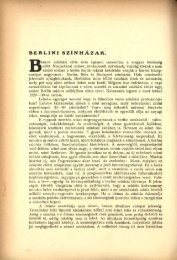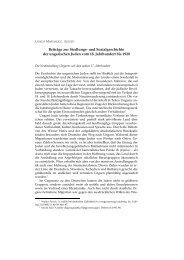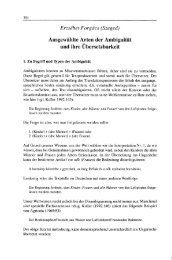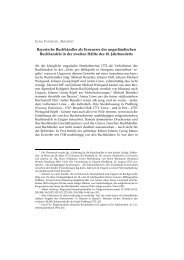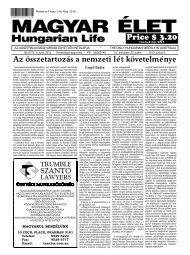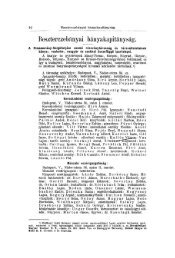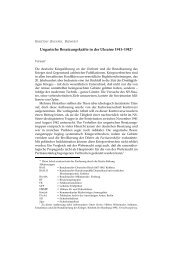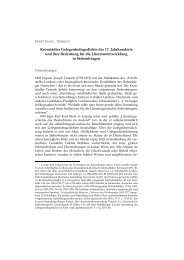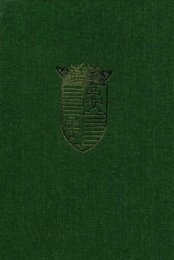hungarian studies - EPA - Országos Széchényi Könyvtár
hungarian studies - EPA - Országos Széchényi Könyvtár
hungarian studies - EPA - Országos Széchényi Könyvtár
You also want an ePaper? Increase the reach of your titles
YUMPU automatically turns print PDFs into web optimized ePapers that Google loves.
SOME QUESTIONS ON HUNGARIAN-SOVIET RELATIONS 19<br />
investment, out of which almost 50% went to industry (including construction)<br />
and only 14% to agriculture. 91 This percentage of national income invested in<br />
Hungary was higher than the rates of investment under the first Five-Year Plans in<br />
Bulgaria (19,6), Czechoslovakia (22,3), Poland (21,6), or for the Soviet Union<br />
(21%) between 1946 and 1950. The share of industry in investment was also higher<br />
in Hungary than in the abovementioned people's democracies and the Soviet Union.<br />
The same was true for the share of heavy industry and construction in all<br />
industrial investments, which was over 90% in Hungary, 83% in Bulgaria, 78% in<br />
Czechoslovakia and 75% in Poland during the same period. 92 Just as in the Soviet<br />
Union beginning in the early 1930s resources were diverted from agriculture to<br />
industry. This was done by decreasing the share of the national resources spent on<br />
agricultural development, by drastically reducing the price paid for agricultural<br />
products, coupled to an artificial increase in the price of the industrial products<br />
that were sold to the agricultural sector. In this way the government killed two<br />
birds with one stone. It carried out its economic program and made progress in the<br />
liquidation of the peasantry as a social class. The impact of the government's<br />
economic policy on the standard of living was disastrous. In 1952 the price index<br />
of consumer goods was 166% higher than that of capital goods. The price of<br />
clothing was seventeen times, that of foodstuffs twelve times higher than in 1938.<br />
At the same time services were cheaper. The purchasing power of the Hungarian<br />
forint diminished by 40% between 1946 and 1949, and by another 27% until 1955.<br />
The year 1951 saw the introduction of rationing for meat, bread, lard, sugar, flour<br />
and soap. This was lifted after seven months, but with a simultaneous increase of<br />
prices by 40% and a general pay rise of only 20%. Chiefly due to the compulsory<br />
deliveries, the peasantry's income actually went down as compared to the pre-war<br />
period. During the years between 1949 and 1953 the level of consumption for all<br />
important foodstuffs, save for wheat and sugar, was lower than in the last year of<br />
peace. The deterioration of the quality of consumer goods added another 10% to<br />
the consumer price index, which in 1955 was 35% higher than at the beginning of<br />
the decade. 93 The Poles experienced similar hardships. In Poland by 1953 the<br />
level of meat and sugar consumption had fallen below that of 1949. 94 Hungary,<br />
which had been one of the continent's major exporters of wheat, now had to import<br />
this formerly abundant commodity from the Soviet Union and elsewhere<br />
because its own production was used to service the country's ever growing foreign<br />
debt. Hence in January 1956 the Hungarian leadership had to turn to the<br />
USSR for the shipment of 100 thousand tons of wheat, while in September 1956<br />
another 350 thousand tons were requested for 1957. Such requests could only<br />
increase Hungary's subordinated position vis-à-vis its hegemonic neighbor. Because<br />
of the acute shortage of wheat extraordinary, terroristic methods were employed<br />
to curb consumption. In January 1953, for example, a certain Ferenc Reisz<br />
was sentenced to two years in prison and the confiscation of a thousand forints for



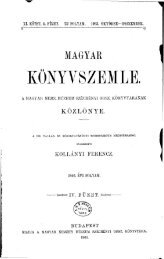
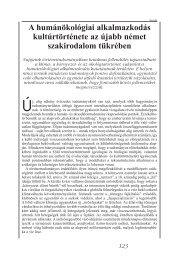
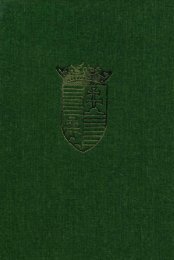
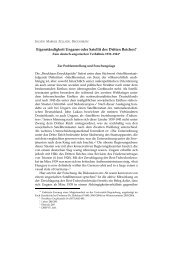
![Letöltés egy fájlban [36.8 MB - PDF] - EPA](https://img.yumpu.com/23369116/1/172x260/letoltes-egy-fajlban-368-mb-pdf-epa.jpg?quality=85)
